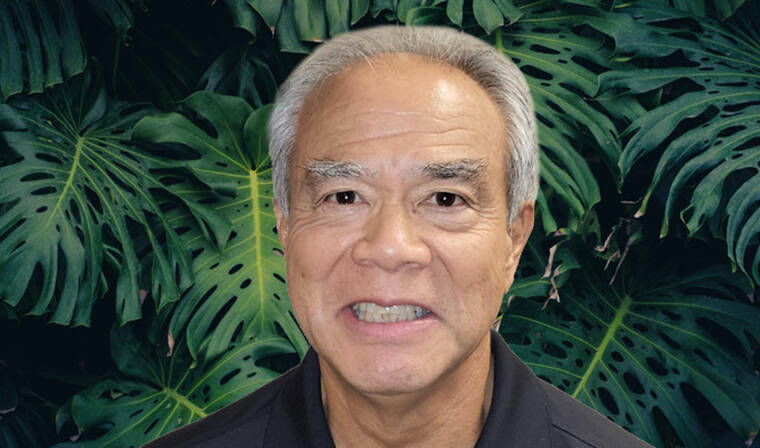In October, two weeks before her 15th birthday, a student from Kealakehe High School died of a drug overdose.
Known as “G,” she loved her friends, drawing and “was always helping other people,” according to her mother, Kym, who requested that their last not be published.
“She was always out for the underdog,” Kym said. “She made friends with the kid on the bus who had Tourette’s that no one would sit next to. She had a friend who didn’t speak English and took her under her wing and helped her with school. She was just really compassionate, but she was really hurting, and I think she wanted to help others because she was so hurt.”
A toxicology report found fentanyl in G’s system, but as far as her family knew, she did not use drugs.
“I’m convinced it was her first time, and I’m convinced it was one pill,” Kym said. “I knew about her mental health struggles, and I was very engaged with it, but I still didn’t know how bad it had gotten. … She and I played cards the night before, and she was okay.”
Her family said the pill was ordered off of Instagram and delivered to their home by mail.
Another 14-year-old Big Island girl died of a fentanyl overdose in November 2021. According to sources, she filmed herself on TikTok snorting an unknown substance before she was airlifted to Kapiolani Medical Center, where she died.
“Through the social media circuits, (kids are) being promised that they’re going to have a great high, a great time with this, and they try it for the first time not knowing how deadly fentanyl products are,” said Hawaii High Intensity Drug Trafficking Area Executive Director Gary Yabuta. “It can kill you with just one application.”
The Drug Enforcement Administration is investigating 120 cases throughout the nation of teens dying from drugs containing fentanyl that were purchased through social media.
“It can come to your doorsteps by virtue of parcel delivery systems — that’s USPS, FedEx and UPS,” said Yabuta. “Just like Amazon products to your doorsteps, it’s that easy.”
Fentanyl is the leading cause of death of those aged 18 to 45 in the U.S., and just 2 milligrams of the synthetic-opioid is enough to kill. The DEA reported seizing enough fentanyl this year alone to kill every person in the nation.
Between January 2022 and September 2022, Hawaii County Area I and Area II Vice recovered 4,268 fentanyl pills and 221.2 grams of powdered fentanyl.
“The Big Island, proportionally, has the most fentanyl deaths,” said Yabuta. “These are rural districts, and they’re getting the most fentanyl per capita cases and the most tragedies.”
In addition to social media, Yabuta thinks trauma brought on by the pandemic has led to an increase in drug use.
“When you have trauma, people are susceptible to trying drugs,” he said. “This (COVID-19) trauma is going to encourage drugs, so we have to be very cautious and get out the information.”
During the first two years of the COVID-19 pandemic, monthly drug overdose deaths in the U.S. nearly tripled among those ages 10 to 19, according to the U.S. Centers for Disease and Prevention’s Morbidity and Mortality Report. Fentanyl was involved in 84% of the deaths, and roughly 41% of those who died had a history of mental health issues.
“Fentanyl is part of that, but I think the umbrella is mental health,” said Kym. “Mental health is your health, and it should be something kids are taught about: how to eat right, how to sleep right, how to address problems like stress, bullying, drugs, all of it.”
According to Kym, her family had been waiting months to see a pediatric psychiatrist when her daughter died.
“The kids are dying, and there’s not enough help,” she said. “This is a threat to our community, to our well-being, our children, and the next generation, and we’ve got to address this or it’s never going to go away.”
The National Association of School Psychologists recommends one school psychologist for every 500 students, but Hawaii has roughly one for every 3,000 students.
“Hawaii has a big shortage of school psychologists,” said Leslie Baunach, Hawaii Delegate for the National Association of School Psychologists. “If we want to be able to do prevention things, the (state Department of Education) needs to look at recruiting and retaining school psychologists and other qualified mental health providers.”
One prevention goal from NASP-Hawaii is to teach students about social-emotional learning.
“Social-emotional learning curriculum teaches kids how to make good choices,” said Baunach. “If we’re giving those basic social skills: self-responsibility, ways to say no, teaching kids about boundaries — we’re preparing them when they enter middle school, high school and adulthood, when they’re going to be exposed to these different things.”
The Hawaii Island Fentanyl Task Force has been hosting presentations for students in Honokaa, Pahoa, Ka‘u and other middle and high schools to spread awareness.
The task force members hope to convince the DOE to place Narcan in classrooms. Known medically as naloxone, the nasal spray drug reverses the effects of an opioid overdose.
“Narcan is a wonderful drug and the only cure of a fentanyl or opioid overdose,” said Yabuta. “Every household needs Narcan. Clearly, every classroom does.”
The state Department of Health reported 134 EMS calls on the Big Island between April and September of 2022 in which naloxone was administered.
“All the teachers come up to me and say, ‘Can we have (Narcan) for our class?” said Kimo Alameda, fentanyl task force leader. “But right now, the policy is, you cannot administer drugs.”
Only certified nurses from the Hawaii Keiki Program can carry Narcan in their emergency medication bags, but there are only 54 of these nurses statewide, mostly on Oahu.
Alameda held a free Narcan distribution event last month for East Hawaii, where 689 boxes were given to community members. He hopes the DOE and the county can bring Narcan into its schools and offices this year.
“The (DOE) is offering voluntary training for identified staff role groups on emergency response procedures for opioid overdoses,” said West Hawaii Complex Area Superintendent Janette Snelling, adding students do not have to navigate mental health issues alone.
“We have on-campus counselors and school-based behavioral health specialists to help and who can connect them with specialized support, if needed,” she said.
A sign-waving event in response to G’s death took place at Kealakehe High School in November, with students, teachers, Mayor Mitch Roth, and staff members from Hawaii Island Community Health Center participating.
A funeral was held in December, which Kym described as a beautiful ceremony with lots of people.
“She was a lovely person, and she had a lot to offer, and it’s not just my loss,” she said. “It’s really the whole community’s loss, because she could have helped lots of people in her life, just by being kind.”
There are resources available for students struggling with mental health issues including: HawaiiCARES.org, ZCares.org, cyberwise.org, casel.org, and the Mental Health Crisis Line at 988.
Hawaii’s Minor Consent Law, passed in 2021, allows students 14 years or older to seek mental health services without the knowledge or consent of a parent or legal guardian.
“Nobody tells the story better than a mother who lost their child to this very dangerous drug,” said Alameda. “They’re not just talking from the academic side, or from the evidence side. They’re talking from their experience, they lived it, and we want to continue to have parents come forward, to share their stories, and to come together.”
Email Grant Phillips at gphillips@hawaiitribune-herald.com.






